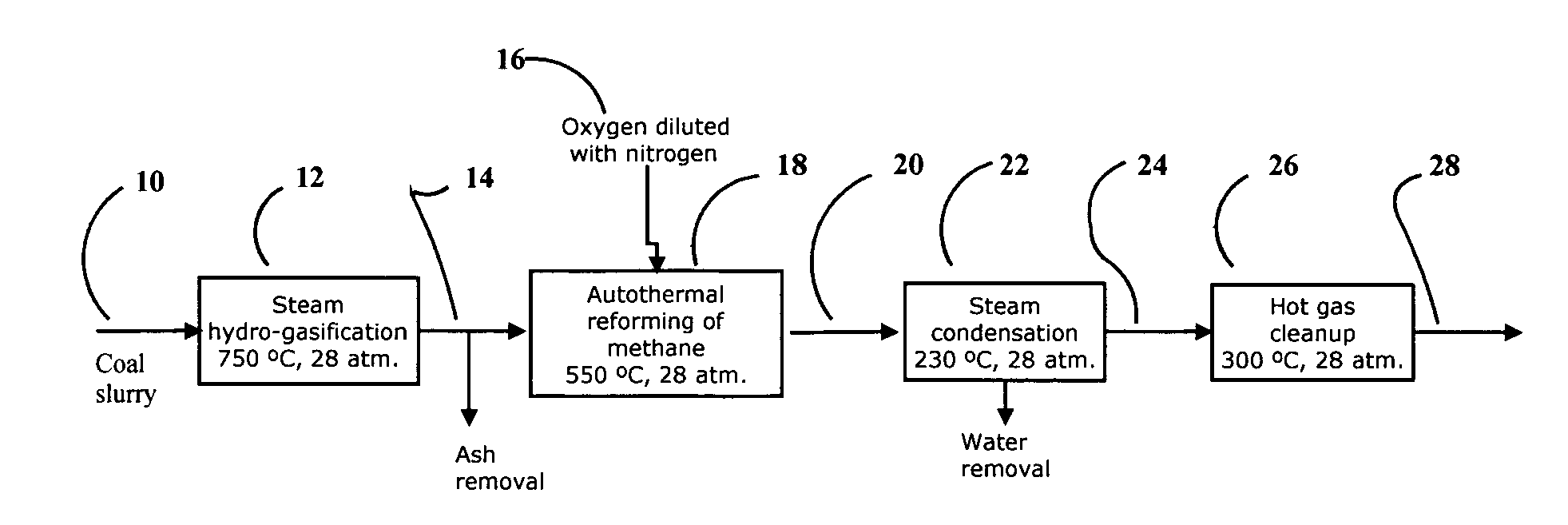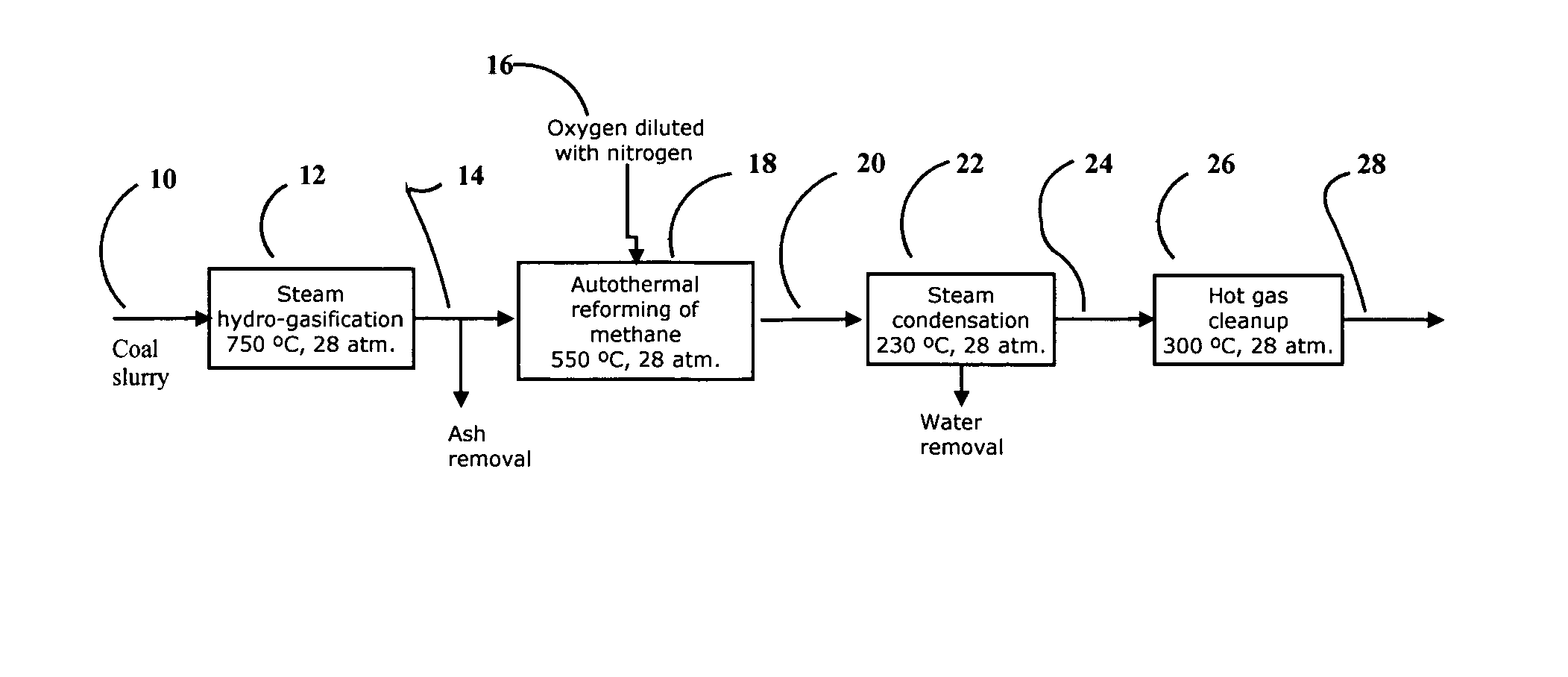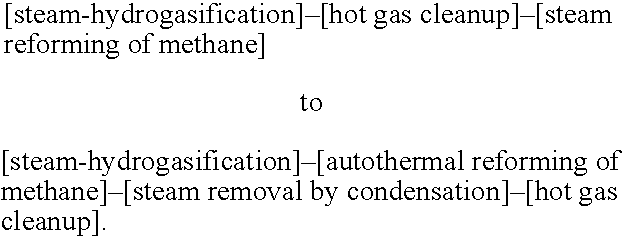Process for enhancing the operability of hot gas cleanup for the production of synthesis gas from steam-hydrogasification producer gas
a technology of steam hydrolysis and hot gas cleanup, which is applied in the direction of combustible gas production, combustible gas purification/modification, hydrocarbon oil treatment products, etc., can solve the problems of reducing catalyst efficiency, serious environmental pollution, and major dependence on petroleum, and achieve the effect of enhancing the operability of hot gas cleanup
- Summary
- Abstract
- Description
- Claims
- Application Information
AI Technical Summary
Benefits of technology
Problems solved by technology
Method used
Image
Examples
Embodiment Construction
[0029]This invention provides an improved process scheme that can enhance the operability of hot gas cleanup of steam-hydrogasification producer gas.
[0030]One embodiment of this invention discloses replacing the traditional steam-hydrogasification process scheme for the production of synthesis gas comprising of:
[0031]
[0032]The improved process scheme can be used where there are separate steam pyrolysis and hydro-gasification reactors, followed by an autothermal reforming reactor, in a process for producing a synthesis gas for use as fuel for process heat and / or in a fuel engine or gas turbine that can generate electricity; or as feed into a Fischer-Tropsch type reactor to produce a liquid paraffinic fuel, recycled water and sensible heat, in a substantially self-sustaining process.
[0033]Preferably, the improved process scheme is used with a steam hydro-gasification reactor (SHR) in which carbonaceous material is heated in the presence of both hydrogen and steam to undergo steam pyro...
PUM
| Property | Measurement | Unit |
|---|---|---|
| temperature | aaaaa | aaaaa |
| temperature | aaaaa | aaaaa |
| mole ratio | aaaaa | aaaaa |
Abstract
Description
Claims
Application Information
 Login to View More
Login to View More - R&D
- Intellectual Property
- Life Sciences
- Materials
- Tech Scout
- Unparalleled Data Quality
- Higher Quality Content
- 60% Fewer Hallucinations
Browse by: Latest US Patents, China's latest patents, Technical Efficacy Thesaurus, Application Domain, Technology Topic, Popular Technical Reports.
© 2025 PatSnap. All rights reserved.Legal|Privacy policy|Modern Slavery Act Transparency Statement|Sitemap|About US| Contact US: help@patsnap.com



